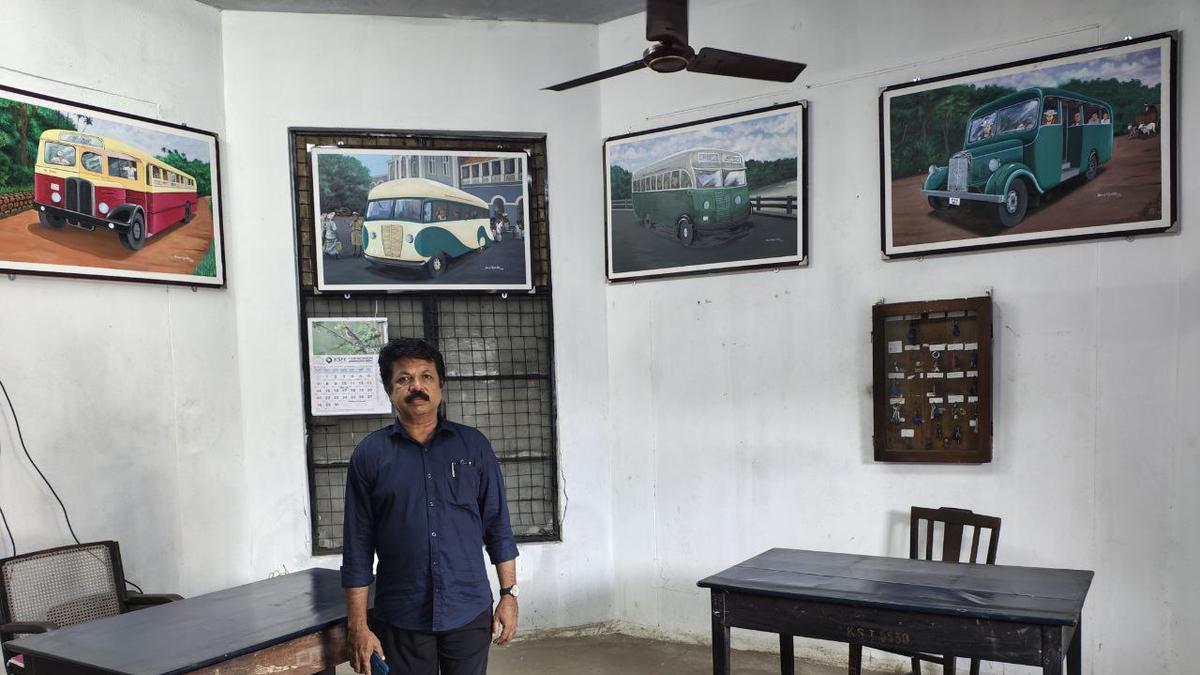The District Transport Office building near the Kerala State Road Transport Corporation (KSRTC) bus depot at East Fort, Thiruvananthapuram, opposite Gandhi Park, presents an unassuming facade. The entry to the newly-inaugurated museum wing in the office is marked by coloured plastic chairs placed on both sides of the pathway. The concrete floors and whitewashed walls paint a lacklustre picture, contrary to the intimidating image of a KSRTC bus, affectionately called the aanavandi.
However, inside the museum, as you look up, you will see walls adorned with wooden frames and multiwood canvases (a type of polymer), all painted with vibrant acrylics. The paintings document buses from 1938, starting with the Travancore State Transport Department (TSTD)-owned models and continuing with KSRTC buses, after the Corporation was formed in 1965. The museum is set in such a manner that people who choose to travel in the KSRTC Swift’s Nagarakazhchakal ride starting from East Fort can see the artwork before the journey.
“The 1938-model bus was driven by EG Salter, or Salter sayippu, the superintendent of Travancore State Transport Department, when it was inaugurated by Sree Chithira Thirunal the same year,” says artist Mahesh Velayudhan. He points to the painting of a green bus, plying across the Karamana bridge, with a TSTD board, en route to Nagercoil from Kanyakumari, and says, “It is said they released 27 buses of these models initially.”
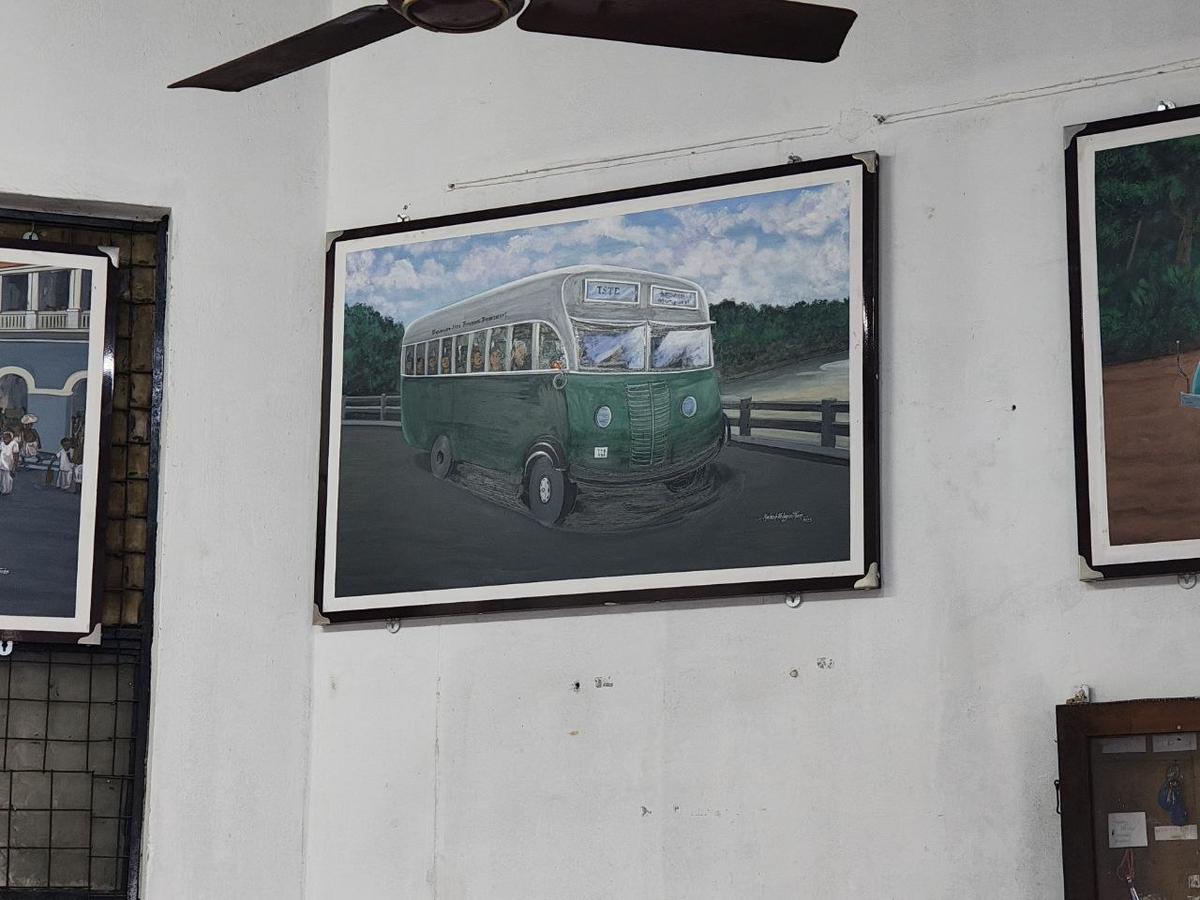
The bus believed to be driven by EG Salter, or Salter sayippu, the superintendent of Travancore State Transport Department to Nagercoil
| Photo Credit:
Nainu Oommen
Mahesh, 53, painted 18 works with the help of two other painters. This includes four buses from 1938, two of which were painted in shades of grey.
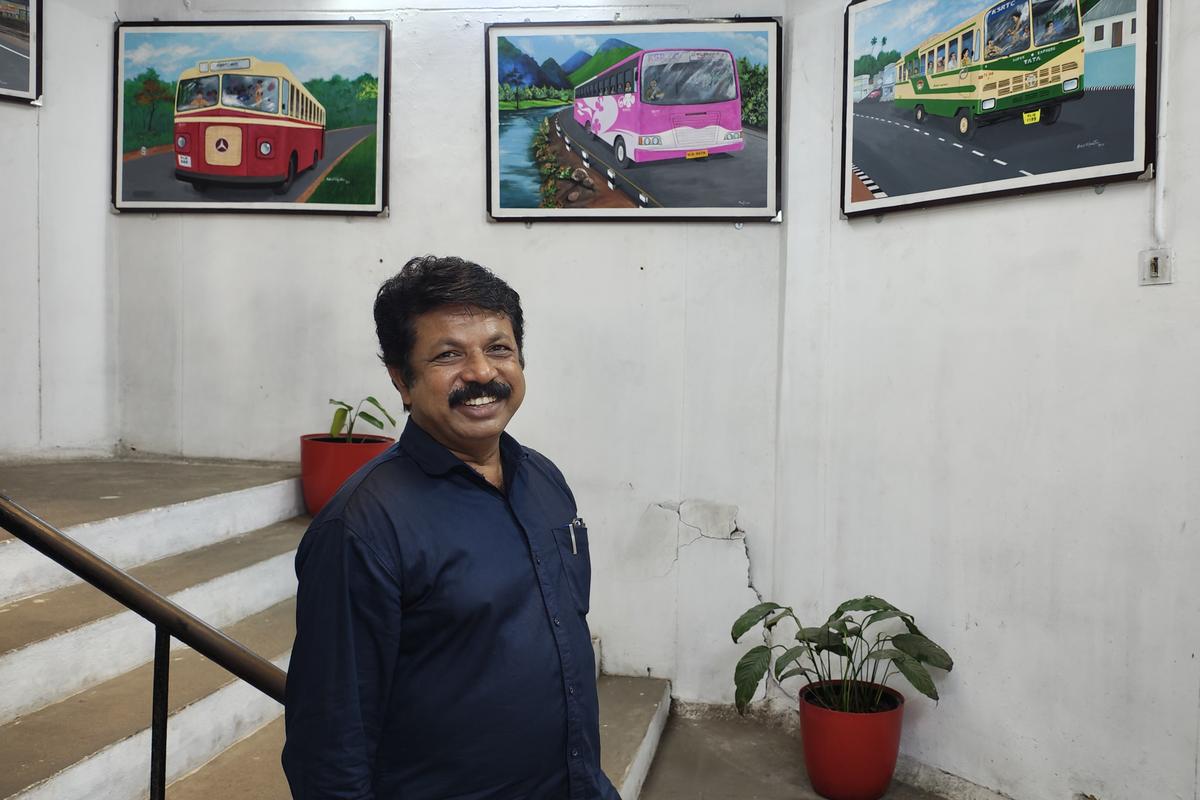
Mahesh Velayudhan at the KSRTC Art Museum at East Fort, Thiruvananthapuram
| Photo Credit:
Nainu Oommen
Mahesh was assigned to work on the museum at the instruction of Thiruvananthapuram Assistant Transport Officer, CP Prasad. Previously, he had painted murals of former state Ministers of Transport at the KSRTC central workshop at Pappanamcode. As a painter at the depot, Mahesh paints destination boards, and creates designs on buses like “the Royal View double-decker buses, which were released in Munnar, earlier this year.”
At the museum, Mahesh has painted the 1977 model double-decker buses with the iconic red and yellow colour palette. “It was difficult to find the colours of the buses. We figured out what they were by asking retired transport employees,” says Mahesh.
Another 1977 bus model, longer than the usual KSRTC buses, with a peculiar, slightly raised portion in the middle behind its chassis area is on display, too. “They discontinued it because it was impractical,” says Mahesh.
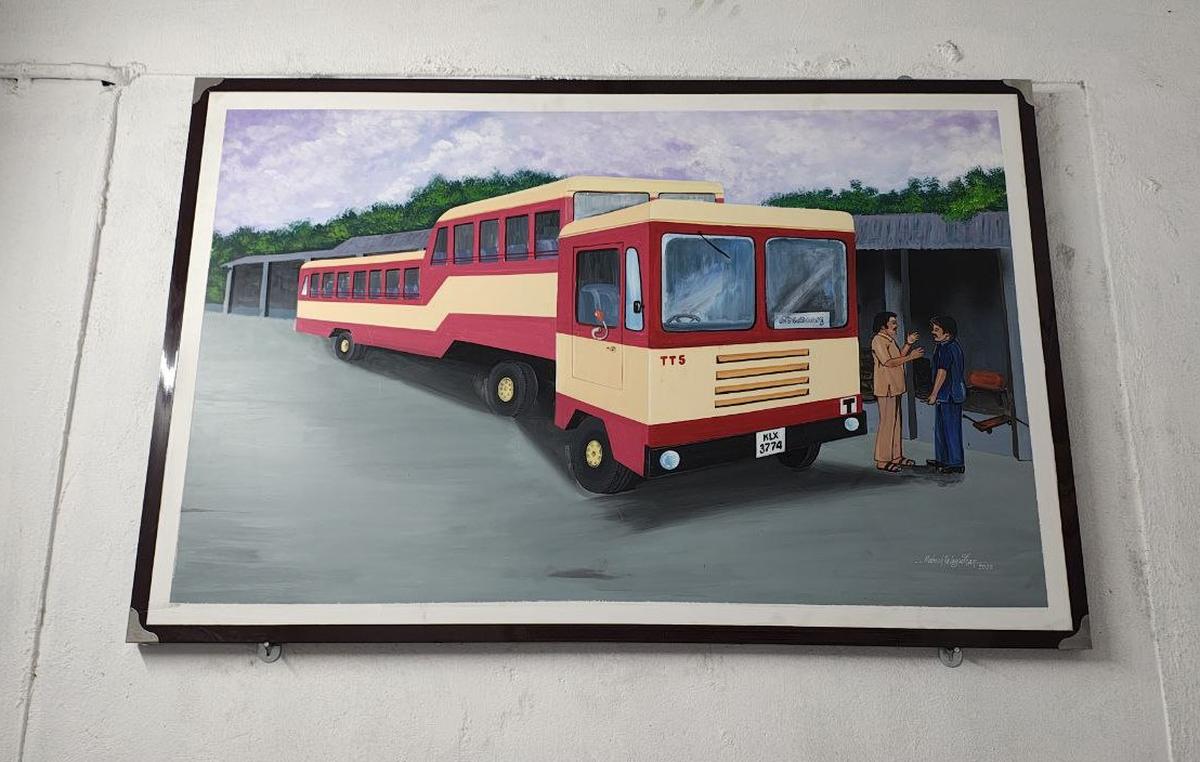
A 1977 bus model, longer than the usual KSRTC buses, with a peculiar, slightly raised portion in the middle.
| Photo Credit:
Nainu Oommen
“The 1964 Benz model buses in red and yellow were the first ones to come out after the KSRTC was formed,” says Mahesh.
A 1965-model bus, currently used as a depot van for repairs, spare parts, and towing of malfunctioning buses, is on display with a blue-and-white Venad bus. Named after a medieval kingdom based in Southern Kerala, Venad is still one of the most commonly found buses in the State.
The paintings include depictions of pink buses for women, and a ring-road service bus (a bus following a circular route) called the Rajdhani bus, which are no longer in use.
The Rajdhani buses were launched in 2012 April, but was soon discontinued following financial losses.
A painting of the Kaveri boat services, which was controlled by KSRTC till 1985, when the Department of Transport adopted it directly, is on display too.
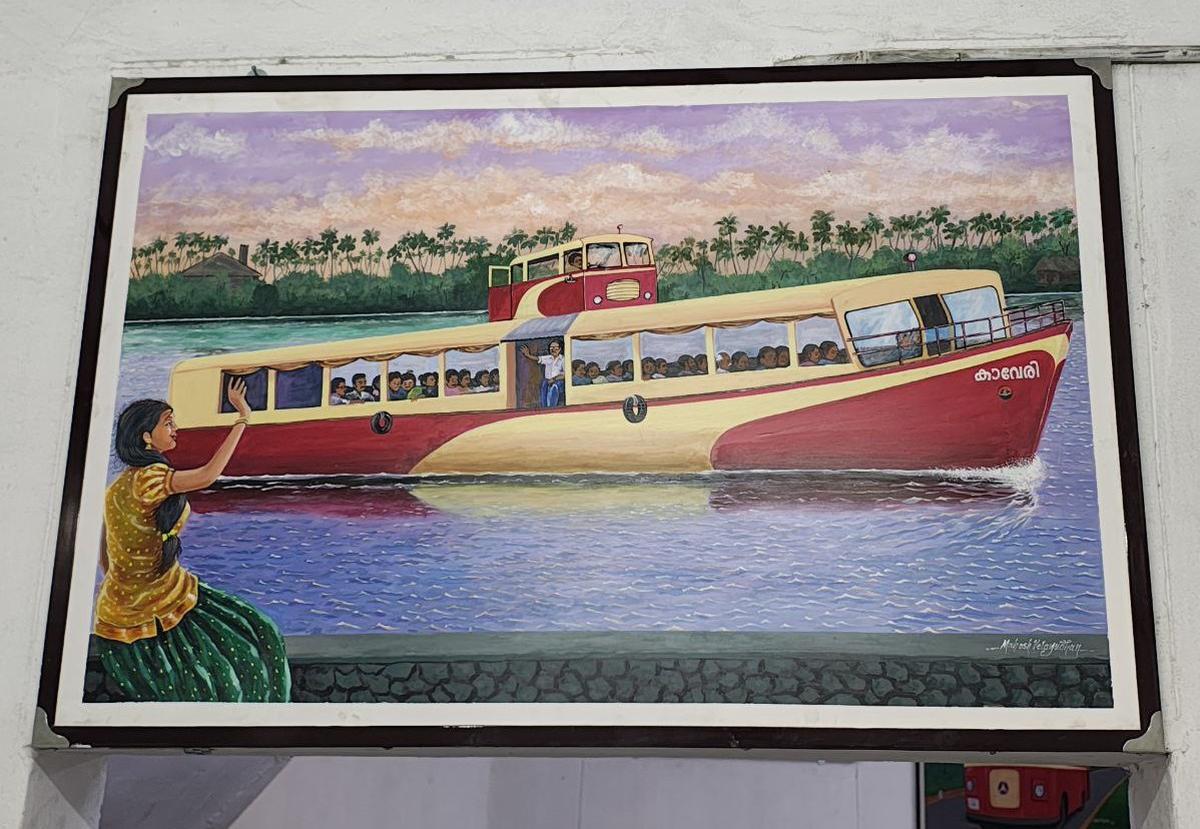
Kaveri boat service which was taken over by the Department of Transport from the KSRTC
| Photo Credit:
Nainu Oommen
Mahesh says there are four more paintings to be added to the collection, which he hopes to finish in a month.
The artist is also hoping to paint private buses, which were in existence before the state transportation department buses. “One of the first buses was the size of an extended autorickshaw. Since I have got my hands on a picture of it, I would like to draw it soon.”
Published – September 16, 2025 05:00 pm IST

